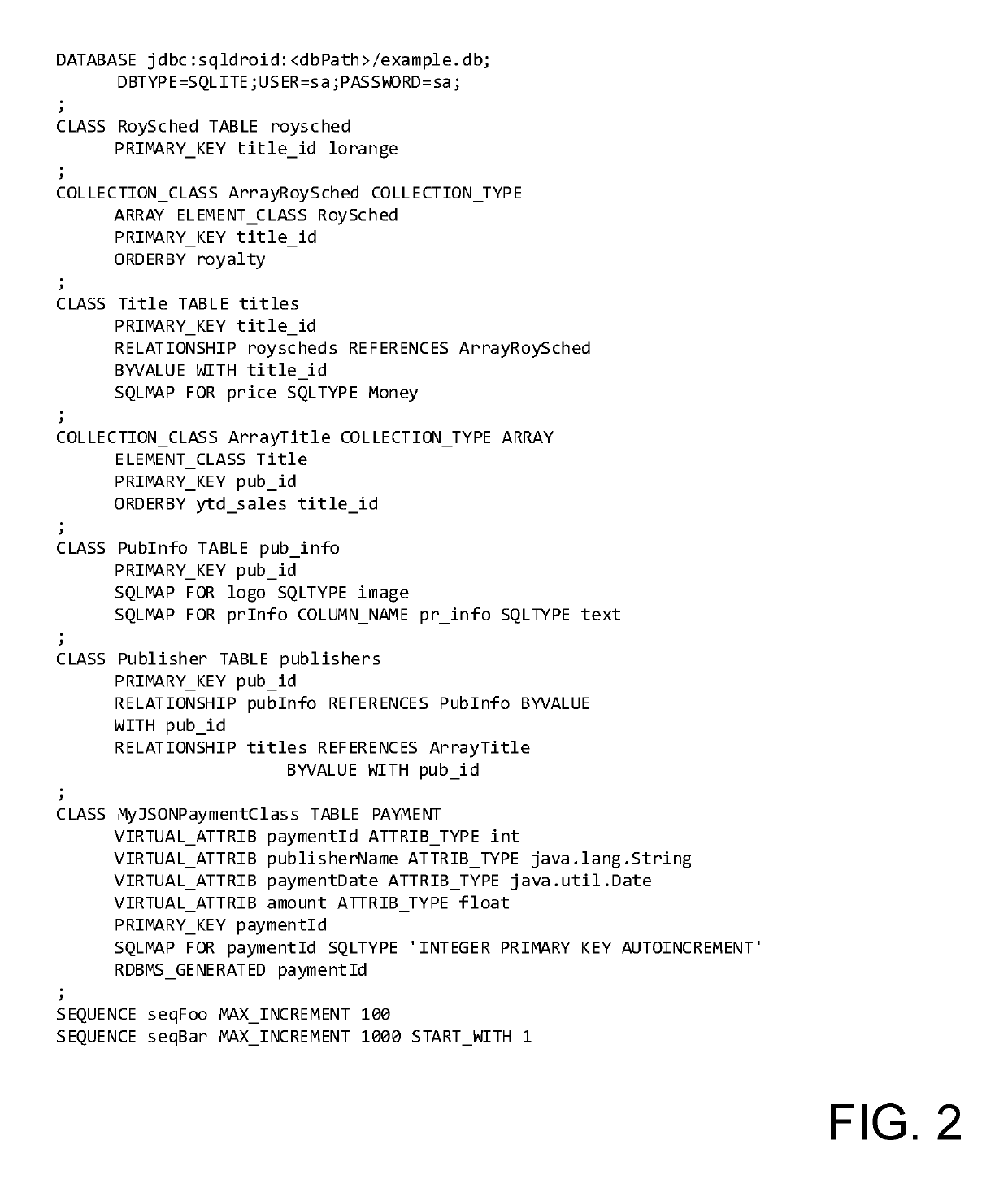Object mapping and conversion system
- Summary
- Abstract
- Description
- Claims
- Application Information
AI Technical Summary
Benefits of technology
Problems solved by technology
Method used
Image
Examples
Embodiment Construction
[0071]Various examples of embodiments are described below with reference to the drawings. The following exemplary embodiments are illustrative and are not to be construed as limiting.
[0072]Relational Systems
[0073]Relational Systems persist (store) data in tables. A Relational System usually contains many relationships among tables. Relational Systems are generally represented in Relational Database Management Systems (RDBMS). The terms “Relational System”, “Relational Database”, and “Relational Database Management System (RDBMS)” are used interchangeably.
[0074]Relational databases are generally represented by tables with rows and columns of data. Each database column represents a type of data value of a particular database table. Each database row represents a particular record (tuple). For example, the Employee table of a database can have rows representing employees (e.g., Mark Smith, John Doe, and Mary Carter) and columns representing data associated with each employee (e.g., Emp...
PUM
 Login to View More
Login to View More Abstract
Description
Claims
Application Information
 Login to View More
Login to View More - R&D
- Intellectual Property
- Life Sciences
- Materials
- Tech Scout
- Unparalleled Data Quality
- Higher Quality Content
- 60% Fewer Hallucinations
Browse by: Latest US Patents, China's latest patents, Technical Efficacy Thesaurus, Application Domain, Technology Topic, Popular Technical Reports.
© 2025 PatSnap. All rights reserved.Legal|Privacy policy|Modern Slavery Act Transparency Statement|Sitemap|About US| Contact US: help@patsnap.com



